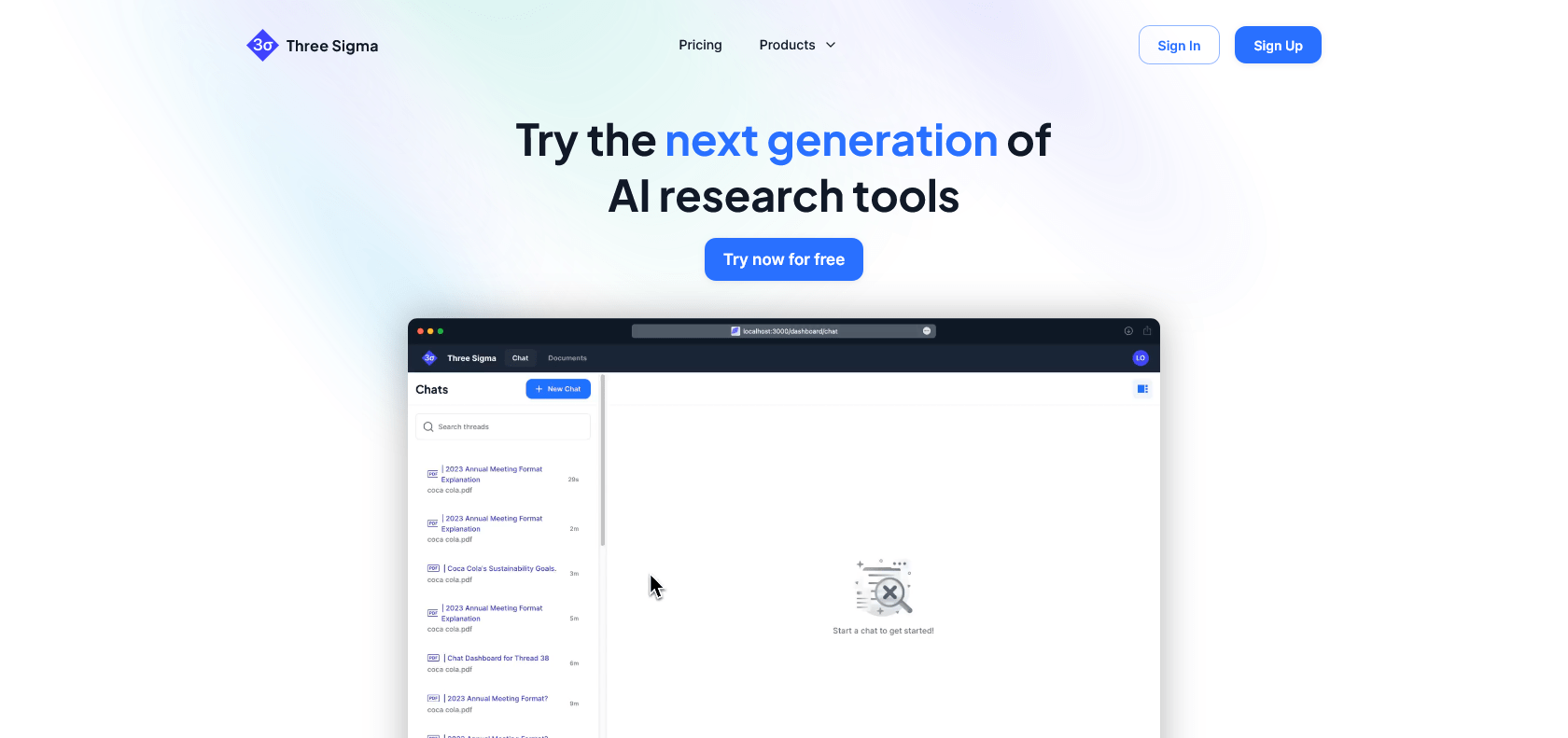Discover 7422 Tools

Empower analysis with seamless document interrogation.
Three Sigma: Analyze documents effortlessly. Upload any file, ask questions, and view detailed blocks of context for accurate answers. Perfect for students, research, and law.

Three Sigma is a powerful tool that allows users to analyze various types of documents. It simplifies the process by allowing you to upload a document and ask questions just like you would with ChatGPT. What makes Three Sigma unique is that it not only provides you with answers but also shows you the specific portions of the document from where those answers are derived. This feature enhances your understanding and ensures transparency in the information retrieval process.
Even if you don't have a document at hand, Three Sigma offers a free solo mode where you can interact with it using the same framework as ChatGPT. This allows you to experience the tool's capabilities firsthand without any limitations.
Three Sigma is especially beneficial for students, researchers, and professionals in the legal field. However, its applications extend to a wide range of use cases, constantly evolving as we discover new ways in which Three Sigma can be utilized.
With Three Sigma, document analysis becomes effortless, efficient, and insightful.
Document analysis for any type
Contextual blocks of information provided
Free solo mode available for interaction
Support for long and varied documents
Three Sigma

Join the AI revolution and explore the world of artificial intelligence. Stay connected with us.
Copyright © 2025 AI-ARCHIVE
Today Listed Tools 215
Discover 7422 Tools